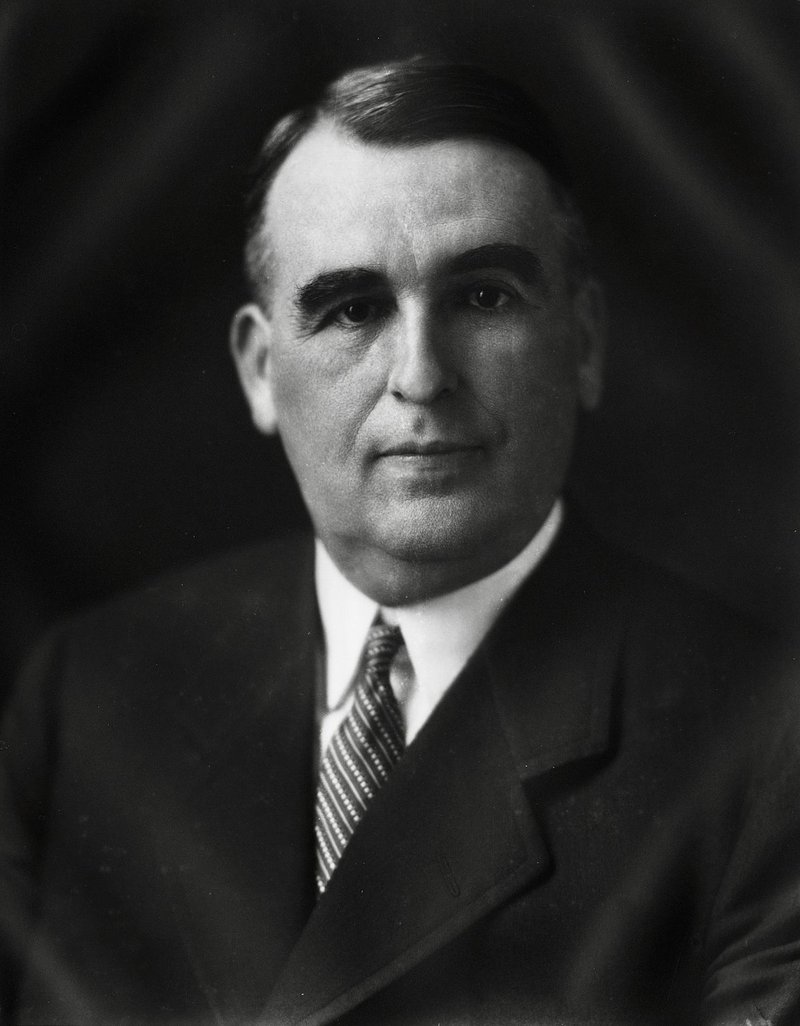Student Work
Governor White
By: Tyler Raby

Hugh L. White, Governor of Mississippi. Photo Credit: Courtesy of the Mississippi Department of Archives and History
Strapped for Cash
During the 1930s, Neilson’s transactions were often taken on credit. However, these transactions were dealt in only a few dollars at a time. Once the Great Depression hit and the banks closed its doors and Neilson’s became a place for people to cash checks and buy products on credit. Through Neilson’s ledgers, we can see how Oxford itself was hit by the Great Depression and what kind of impact it had on the town’s department stores. Before the Depression however, credit was difficult to deal with in large amounts but Governor Hugh White helped change this for Mississippians.
Mississippi was already one of the poorest states in the United States. It was off-balance between agriculture and industry. For Example, between 1929 to 1933, agriculture income in Mississippi was reduced by 64 percent. Also, the average annual income—already the worst in the nation—went from $287 to only $117.[1] President Roosevelt’s New Deal helped money flow through Mississippi with programs like the Agriculture Adjustment Agency (AAA) and the Civilian Conservation Corps (CCC). However, Governor Hugh White believed that the Federal plan for credit—the Columbia plan—would not help Mississippi in the long term. White knew that Mississippi could not rely on New Deal plans forever and wanted to seek something new to help the state. White eventually found a solution and proposed the Balance of Agriculture with Industry Plan (BAWI) and moved Mississippi toward state economic planning that was similar to the already established New Deal programs but on a state level instead of a federal one. Some of the BAWIs plans included programs where factories would become owned by the workers and also had programs that would help people find jobs through the State government. Mississippi’s constitution directly opposed buying on credit on the state level but with the BAWI and a team of attorneys, White was able to draft the bill. Overall, the results of the BAWI was mixed; even though it helped relieve some of the pressure of the Great Depression, it did not greatly improve the lives of Mississippi’s working class. For example, through even though the state helped people find jobs, these programs would advertise factory jobs by noting how “Anglo-Saxon” they were and discouraged African Americans from applying.[2]
Banks were in a state of panic. Loans become increasingly more difficult to get and pay for everyday items was more than a challenge. Which was once a small part of purchasing for Neilson’s, buying on credit and cashing checks had to become an integral part of the purchasing process. In-store credit became a vital part of the Oxford economy. At the onset of the Great Depression – October of 1930 – purchases made at Neilson’s with credit made up nearly 40% of the overall total sales.[3]
Ledger 35, October 35, 1930 from Neilson’s Collection, Department of Archives and Special Collections, The University of Mississippi Libraries.
[1] Lester, Connie, “Economic Development in the 1930s: Balance of Agriculture and Industry.” Historynow.gov
[2] I.bid
[3] Ledger 35 October (Sales) 1930
